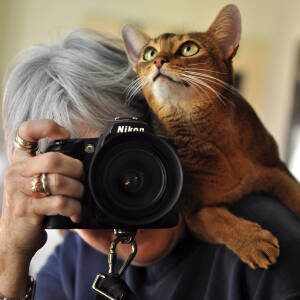Julbocken reflections
The Yule Goat, or Julbocken is one of the oldest Scandinavian and Northern European Yule and Christmas symbols and traditions. Originally denoting the goat that was slaughtered during the Germanic pagan festival of Yule, Yule Goat now typically refers to a goat-figure made of straw. It is also associated with the custom of wassailing, sometimes referred to as
going Yule Goat
in Scandinavia.
Its origins might go as far back as to pre-Christian days, where goats were connected to the Norse god Thor, who rode the sky in a chariot drawn by two goats, Tanngrisnir and Tanngnjóstr, and carried his hammer Mjöllnir. The Prose Edda, written by Snorri Sturluson in the 13th century, relates that when Thor kills and cooks the goats, their flesh provides sustenance for the god and his guests, and after Thor resurrects them with his hammer they are brought back to life the next day.
The function of the Yule Goat has differed throughout the ages. In Finland, the Yule Goat was originally said to be an ugly creature that frightened children, and demanded gifts at Christmas. In Scandinavia, people thought of the Yule Goat as an invisible creature that would appear some time before Christmas to make sure that the Yule preparations were done right. During the 19th century its role shifted towards becoming the giver of Christmas gifts, in Finland as well as the rest of Scandinavia, with one of the men in the family dressing up as the Yule Goat. The goat was replaced by jultomte or julenisse (Father Christmas/Santa Claus) at the end of the century, although he is still called the Yule Goat (Joulupukki) in Finland, and the tradition of the man-sized goat disappeared.
The Yule Goat is nowadays best known as a Christmas ornament often made out of straw or roughly-hewn wood. The modern version of the Yule Goat figure is a decorative goat made out of straw and bound with red ribbons, a popular Christmas ornament often found under the Yule tree or Christmas tree. Large versions of this ornament are frequently erected in towns and cities around Christmas time - these goats tend to be illegally set on fire before Christmas. The Gävle goat was the first of these goats, and remains the most famous.
The early morning treetops were lovely today and reflected on our front window with our old wavy glass. Our Swedish straw goat greets the day from the dining room window. I adore John Bauer's illustrations of all things Christmas, magical beings and trolls of the deep forests and mountains. I have such a fondness for illustrators, he being my favorite.
For the Record,
This day came in with a beautiful sunrise after the rain. Windy and the warm temperatures will be falling by afternoon.

Comments
Sign in or get an account to comment.


